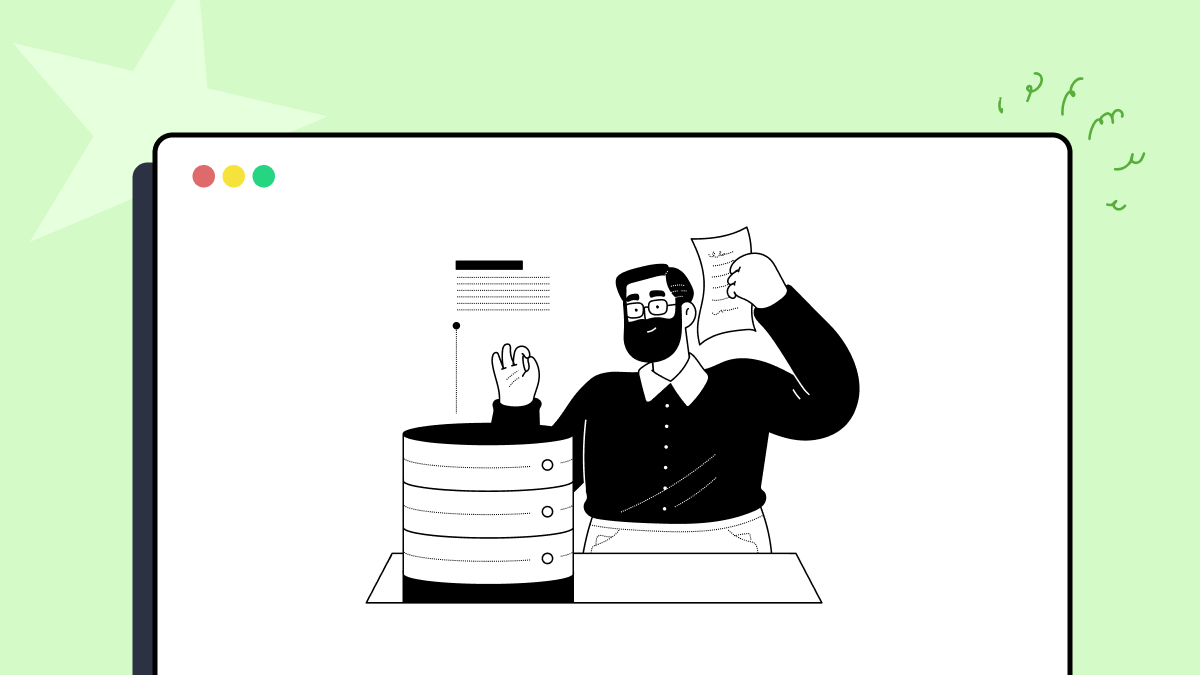How to use AfterTestRunEndResult class of Microsoft.VisualStudio.TestPlatform.Common.DataCollection package
Best Vstest code snippet using Microsoft.VisualStudio.TestPlatform.Common.DataCollection.AfterTestRunEndResult
DataCollectionRequestSender.cs
Source: DataCollectionRequestSender.cs
...127 }128 return result;129 }130 /// <inheritdoc/>131 public AfterTestRunEndResult SendAfterTestRunEndAndGetResult(ITestMessageEventHandler runEventsHandler, bool isCancelled)132 {133 var isDataCollectionComplete = false;134 AfterTestRunEndResult result = null;135 if (EqtTrace.IsVerboseEnabled)136 {137 EqtTrace.Verbose("DataCollectionRequestSender.SendAfterTestRunStartAndGetResult : Send AfterTestRunEnd message with isCancelled: {0}", isCancelled);138 }139 this.communicationManager.SendMessage(MessageType.AfterTestRunEnd, isCancelled);140 // Cycle through the messages that the datacollector sends.141 // Currently each of the operations are not separate tasks since they should not each take much time. This is just a notification.142 while (!isDataCollectionComplete && !isCancelled)143 {144 var message = this.communicationManager.ReceiveMessage();145 if (EqtTrace.IsVerboseEnabled)146 {147 EqtTrace.Verbose("DataCollectionRequestSender.SendAfterTestRunStartAndGetResult : Received message: {0}", message);148 }149 if (message.MessageType == MessageType.DataCollectionMessage)150 {151 var dataCollectionMessageEventArgs = this.dataSerializer.DeserializePayload<DataCollectionMessageEventArgs>(message);152 this.LogDataCollectorMessage(dataCollectionMessageEventArgs, runEventsHandler);153 }154 else if (message.MessageType == MessageType.AfterTestRunEndResult)155 {156 result = this.dataSerializer.DeserializePayload<AfterTestRunEndResult>(message);157 isDataCollectionComplete = true;158 }159 }160 return result;161 }162 private void LogDataCollectorMessage(DataCollectionMessageEventArgs dataCollectionMessageEventArgs, ITestMessageEventHandler requestHandler)163 {164 string logMessage;165 if (string.IsNullOrWhiteSpace(dataCollectionMessageEventArgs.FriendlyName))166 {167 // Message from data collection framework.168 logMessage = string.Format(CultureInfo.CurrentCulture, CommonResources.DataCollectionMessageFormat, dataCollectionMessageEventArgs.Message);169 }170 else...DataCollectionRequestSenderTests.cs
...32 var attachmentUri = new Uri("my://filename.txt");33 var displayName = "CustomDataCollector";34 var attachment = new AttachmentSet(datacollectorUri, displayName);35 attachment.Attachments.Add(new UriDataAttachment(attachmentUri, "filename.txt"));36 this.mockDataSerializer.Setup(x => x.DeserializePayload<AfterTestRunEndResult>(It.IsAny<Message>())).Returns(37 new AfterTestRunEndResult(new Collection<AttachmentSet>() { attachment }, new Dictionary<string, object>()));38 this.mockCommunicationManager.Setup(x => x.ReceiveMessage()).Returns(new Message() { MessageType = MessageType.AfterTestRunEndResult, Payload = null });39 var result = this.requestSender.SendAfterTestRunEndAndGetResult(null, false);40 Assert.IsNotNull(result);41 Assert.IsNotNull(result.AttachmentSets);42 Assert.IsNotNull(result.Metrics);43 Assert.AreEqual(1, result.AttachmentSets.Count);44 Assert.AreEqual(0, result.Metrics.Count);45 Assert.IsNotNull(result.AttachmentSets[0]);46 Assert.AreEqual(displayName, result.AttachmentSets[0].DisplayName);47 Assert.AreEqual(datacollectorUri, result.AttachmentSets[0].Uri);48 Assert.AreEqual(attachmentUri, result.AttachmentSets[0].Attachments[0].Uri);49 }50 [TestMethod]51 public void SendAfterTestRunEndAndGetResultShouldNotReturnAttachmentsWhenRequestCancelled()52 {...AfterTestRunEndResult
Using AI Code Generation
1using Microsoft.VisualStudio.TestPlatform.Common.DataCollection;2using Microsoft.VisualStudio.TestPlatform.ObjectModel.DataCollection;3using Microsoft.VisualStudio.TestPlatform.ObjectModel.DataCollection;4using Microsoft.VisualStudio.TestPlatform.Common.DataCollection;5using Microsoft.VisualStudio.TestPlatform.ObjectModel.DataCollection;6using Microsoft.VisualStudio.TestPlatform.ObjectModel.DataCollection;7using Microsoft.VisualStudio.TestPlatform.Common.DataCollection;8using Microsoft.VisualStudio.TestPlatform.ObjectModel.DataCollection;9using Microsoft.VisualStudio.TestPlatform.ObjectModel.DataCollection;10using Microsoft.VisualStudio.TestPlatform.Common.DataCollection;11using Microsoft.VisualStudio.TestPlatform.ObjectModel.DataCollection;12using Microsoft.VisualStudio.TestPlatform.ObjectModel.DataCollection;13using Microsoft.VisualStudio.TestPlatform.Common.DataCollection;14using Microsoft.VisualStudio.TestPlatform.ObjectModel.DataCollection;15using Microsoft.VisualStudio.TestPlatform.ObjectModel.DataCollection;16using Microsoft.VisualStudio.TestPlatform.Common.DataCollection;17using Microsoft.VisualStudio.TestPlatform.ObjectModel.DataCollection;18using Microsoft.VisualStudio.TestPlatform.ObjectModel.DataCollection;19using Microsoft.VisualStudio.TestPlatform.Common.DataCollection;20using Microsoft.VisualStudio.TestPlatform.ObjectModel.DataCollection;21using Microsoft.VisualStudio.TestPlatform.ObjectModel.DataCollection;22using Microsoft.VisualStudio.TestPlatform.Common.DataCollection;23using Microsoft.VisualStudio.TestPlatform.ObjectModel.DataCollection;24using Microsoft.VisualStudio.TestPlatform.ObjectModel.DataCollection;25using Microsoft.VisualStudio.TestPlatform.Common.DataCollection;26using Microsoft.VisualStudio.TestPlatform.ObjectModel.DataCollection;27using Microsoft.VisualStudio.TestPlatform.ObjectModel.DataCollection;28using Microsoft.VisualStudio.TestPlatform.Common.DataCollection;29using Microsoft.VisualStudio.TestPlatform.ObjectModel.DataCollection;30using Microsoft.VisualStudio.TestPlatform.ObjectModel.DataCollection;31using Microsoft.VisualStudio.TestPlatform.Common.DataCollection;32using Microsoft.VisualStudio.TestPlatform.ObjectModel.DataCollection;33using Microsoft.VisualStudio.TestPlatform.ObjectModel.DataCollection;AfterTestRunEndResult
Using AI Code Generation
1using System;2using System.Collections.Generic;3using System.IO;4using System.Linq;5using System.Text;6using System.Threading.Tasks;7using Microsoft.VisualStudio.TestPlatform.ObjectModel.DataCollection;8{9 [DataCollectorFriendlyName("TestPlatform")]10 {11 private DataCollectionEnvironmentContext context;12 private DataCollectionSink dataCollectionSink;13 private DataCollectionLogger logger;14 private DataCollectionEvents events;15 public override void Initialize(16 {17 this.context = environmentContext;18 this.dataCollectionSink = dataCollectionSink;19 this.logger = logger;20 this.events = events;21 events.SessionStart += Events_SessionStart;22 events.SessionEnd += Events_SessionEnd;23 events.TestCaseStart += Events_TestCaseStart;24 events.TestCaseEnd += Events_TestCaseEnd;25 events.TestResult += Events_TestResult;26 events.TestRunMessage += Events_TestRunMessage;27 events.TestRunStatsChange += Events_TestRunStatsChange;28 events.TestRunComplete += Events_TestRunComplete;29 events.TestRunAbort += Events_TestRunAbort;30 events.TestSessionMessage += Events_TestSessionMessage;31 events.AfterTestRunStart += Events_AfterTestRunStart;32 events.AfterTestRunEnd += Events_AfterTestRunEnd;33 }34 private void Events_AfterTestRunEnd(object sender, Microsoft.VisualStudio.TestPlatform.ObjectModel.DataCollection.AfterTestRunEndEventArgs e)35 {36 if (e.IsCanceled)37 {38 }39 else if (e.IsAborted)40 {41 }42 {43 }44 }45 private void Events_AfterTestRunStart(object sender, Microsoft.VisualStudio.TestPlatform.ObjectModel.DataCollection.AfterTestRunStartEventArgs e)46 {47 }48 private void Events_TestSessionMessage(object sender, Microsoft.VisualStudio.TestPlatform.ObjectModel.DataCollection.TestSessionMessageEventArgs e)49 {50 }51 private void Events_TestRunAbort(object sender, Microsoft.VisualStudio.TestPlatform.ObjectModel.DataCollection.TestRunAbortEventArgsAfterTestRunEndResult
Using AI Code Generation
1Microsoft.VisualStudio.TestPlatform.Common.DataCollection.AfterTestRunEndResult afterTestRunEndResult = new Microsoft.VisualStudio.TestPlatform.Common.DataCollection.AfterTestRunEndResult();2Microsoft.VisualStudio.TestPlatform.ObjectModel.DataCollection.AfterTestRunEndResult afterTestRunEndResult = new Microsoft.VisualStudio.TestPlatform.ObjectModel.DataCollection.AfterTestRunEndResult();3using Microsoft.VisualStudio.TestPlatform.Common.DataCollection;4using Microsoft.VisualStudio.TestPlatform.ObjectModel.DataCollection;5AfterTestRunEndResult afterTestRunEndResult = new AfterTestRunEndResult();6Microsoft.VisualStudio.TestPlatform.Common.DataCollection.AfterTestRunEndResult afterTestRunEndResult = new Microsoft.VisualStudio.TestPlatform.Common.DataCollection.AfterTestRunEndResult();Blogs
Check out the latest blogs from LambdaTest on this topic:
When it comes to UI components, there are two versatile methods that we can use to build it for your website: either we can use prebuilt components from a well-known library or framework, or we can develop our UI components from scratch.
ChatGPT broke all Internet records by going viral in the first week of its launch. A million users in 5 days are unprecedented. A conversational AI that can answer natural language-based questions and create poems, write movie scripts, write social media posts, write descriptive essays, and do tons of amazing things. Our first thought when we got access to the platform was how to use this amazing platform to make the lives of web and mobile app testers easier. And most importantly, how we can use ChatGPT for automated testing.
Let’s put it short: Appium Desktop = Appium Server + Inspector. When Appium Server runs automation test scripts, Appium Inspector can identify the UI elements of every application under test. The core structure of an Appium Inspector is to ensure that you discover every visible app element when you develop your test scripts. Before you kickstart your journey with Appium Inspector, you need to understand the details of it.
Before we discuss Scala testing, let us understand the fundamentals of Scala and how this programming language is a preferred choice for your development requirements.The popularity and usage of Scala are rapidly rising, evident by the ever-increasing open positions for Scala developers.
Automation Testing Tutorials
Learn to execute automation testing from scratch with LambdaTest Learning Hub. Right from setting up the prerequisites to run your first automation test, to following best practices and diving deeper into advanced test scenarios. LambdaTest Learning Hubs compile a list of step-by-step guides to help you be proficient with different test automation frameworks i.e. Selenium, Cypress, TestNG etc.
LambdaTest Learning Hubs:
- JUnit Tutorial
- TestNG Tutorial
- Webdriver Tutorial
- WebDriverIO Tutorial
- Protractor Tutorial
- Selenium 4 Tutorial
- Jenkins Tutorial
- NUnit Tutorial
- Jest Tutorial
- Playwright Tutorial
- Cypress Tutorial
- PyTest Tutorial
YouTube
You could also refer to video tutorials over LambdaTest YouTube channel to get step by step demonstration from industry experts.
Most used methods in AfterTestRunEndResult
Try LambdaTest Now !!
Get 100 minutes of automation test minutes FREE!!



